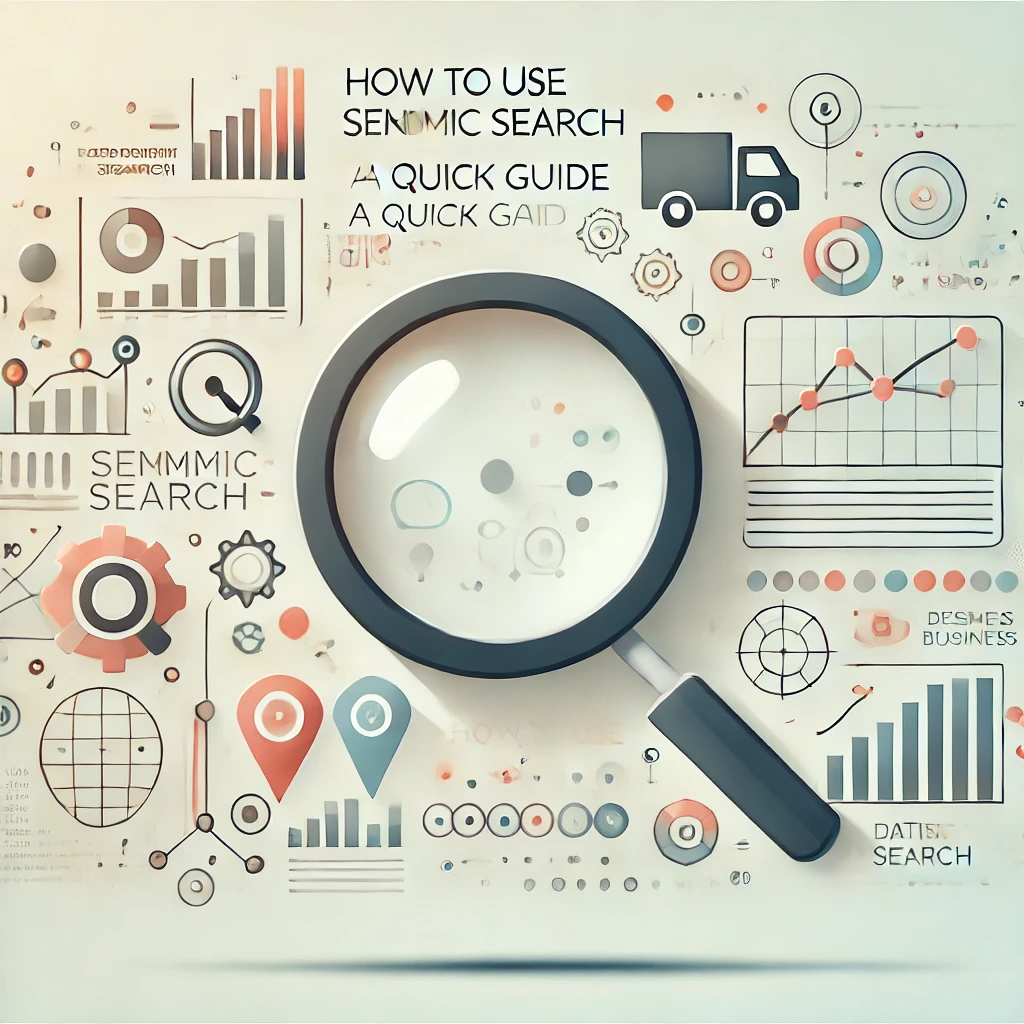With the massive amounts of data generated daily, data analysis has become more complex and demanding. Traditional keyword-based search falls short in understanding the depth of context within data.
Semantic search bridges this gap by focusing on meaning and relationships, going beyond keywords to understand the intent behind searches. This comprehensive approach to search is becoming essential in fields like e-commerce, healthcare, finance, and customer sentiment analysis.
Leveraging insights from SingleStore, Bloomreach, Google Cloud, and Elastic, let’s explore how to effectively use semantic search in data analysis and understand why it’s changing the way we work with data.
What is Semantic Search?
At its core, semantic search is about context and connections. According to Google Cloud’s overview of What is Semantic Search, this technology understands language in the same way that humans do, identifying relationships and intent between words.

For instance, it recognizes that “eco-friendly products” and “sustainable goods” convey a similar intent, even if the keywords differ.
As Bloomreach explains in Semantic Search Explained in 5 Minutes, semantic search relies on three main components:
- Natural Language Processing (NLP) – to understand the language structure,
- Knowledge Graphs – to create connections between entities,
- Machine Learning – to continuously learn and refine the relationships it finds.
Using these technologies, semantic search enhances data analysis by linking related information and delivering results that are relevant to the query’s intent, not just the keywords used.
Why Use Semantic Search in Data Analysis?
In data analysis, accuracy and depth are crucial. Elastic’s guide on What Is Semantic Search? emphasizes that semantic search enables analysts to find relationships and insights that keyword-based searches often miss. Here’s why this is valuable:
Contextual Understanding: Google Cloud highlights that semantic search understands complex queries, such as “cost-effective strategies for small businesses,” and returns content that aligns with cost-saving ideas, even if they are phrased differently.
Improved Efficiency: By providing accurate, intent-driven results, semantic search reduces the need to perform multiple searches to get to the desired information. SingleStore notes that this is particularly useful in fields where time is critical, such as real-time financial analysis or emergency healthcare data.
Revealing Patterns: Elastic describes how semantic search can analyze connections within data, such as understanding that “battery life” and “long-lasting power” are related. This allows analysts to uncover deeper insights and make more informed decisions.
Key Technologies Behind Semantic Search
Each of the referenced articles explains the foundational technologies powering semantic search. Here’s a breakdown of these components:
Natural Language Processing (NLP)
NLP helps semantic search engines understand sentence structure and identify relationships between words, as Bloomreach describes. NLP can determine that “affordable” in “affordable hotels” relates to pricing, enhancing the search engine’s understanding of the query.
Machine Learning
Machine learning enables semantic search to improve over time by learning from previous searches, as explained by SingleStore. For example, if users frequently select results related to “sustainable packaging” when searching “eco-friendly,” the engine learns to associate these terms more strongly.
Knowledge Graphs
According to Elastic, knowledge graphs organize and map out the relationships between entities like “New York” (location) or “revenue growth” (business concept). This helps the engine deliver more contextually relevant results.
These technologies make semantic search highly effective for complex queries where understanding context is crucial
How to Apply Semantic Search in Data Analysis: A Step-by-Step Guide

If you’re looking to incorporate semantic search into your data analysis, here’s a practical guide to get started.
Step 1: Define Your Goals
Before you start, Google Cloud recommends clarifying your objectives. For instance, if your goal is to understand customer sentiment about a product, narrow down your focus to specific aspects like “customer service” or “product durability.” This helps you formulate better queries.
Step 2: Choose the Right Tool
Each semantic search tool offers unique features. For example:
- ElasticSearch is ideal for robust data analysis across large datasets.
- Google Cloud NLP provides comprehensive natural language processing for diverse applications.
- SingleStore offers real-time processing, making it suitable for fast-paced environments.
Choosing a tool that matches your data needs is crucial for effective analysis.
Step 3: Formulate Natural Language Queries
Bloomreach advises using queries that mimic natural speech. Instead of searching “customer satisfaction product,” try asking, “How satisfied are customers with the product?” Semantic search tools interpret these queries with a broader understanding of the words and intent, returning more precise results.
Step 4: Experiment and Refine
Once you start receiving results, refine your queries by using synonyms and related terms, as Elastic recommends. For instance, use both “complaints” and “issues” to capture a full range of feedback data. Experimenting helps uncover more nuanced insights.
Real-World Examples of Semantic Search in Action
Semantic search is transforming data analysis across industries. Here’s how:
E-commerce: According to Bloomreach, e-commerce platforms use semantic search to understand customer intent and recommend relevant products. For example, a search for “eco-friendly bags” might return items labeled “reusable” or “biodegradable,” aligning with the shopper’s values.
Healthcare: Google Cloud notes that semantic search aids in connecting complex medical terms and treatments, improving diagnosis and research accuracy.
Customer Feedback Analysis: By analyzing reviews and comments, semantic search can determine overall customer sentiment. As SingleStore describes, a query like “What do customers dislike about product X?” can yield insights even if exact keywords aren’t present.
Financial Analysis: In finance, semantic search can parse earnings calls, analyst reports, and news articles to identify trends. For example, Elastic highlights how it can link terms like “growth potential” and “market expansion,” providing insights into market sentiment.
Tips for Optimizing Semantic Search in Data Analysis
To maximize the effectiveness of semantic search, consider these best practices:
Use Full Phrases or Questions: Asking “What are common complaints about our product?” gives better results than “product complaints.” This strategy aligns with Google Cloud’s recommendation to use natural language for more accurate search results.
Leverage Filters and Tags: Many tools, such as ElasticSearch, allow you to filter results by categories like date or location, helping you narrow down to the most relevant data points.
Experiment with Synonyms: Bloomreach emphasizes the importance of using synonyms to capture different angles. For example, “support” can be paired with “customer service” to broaden insights.
Analyze and Adjust: Regularly review patterns in your results and refine your queries accordingly. SingleStore suggests monitoring common phrases to ensure that you’re capturing all relevant insights.
Benefits and Challenges of Using Semantic Search in Data Analysis
Benefits:
- Enhanced Relevance: Semantic search understands intent, delivering results that align closely with the user’s goal.
- Time Efficiency: With more accurate results, semantic search reduces the need for multiple queries.
- Insightful Patterns: By analyzing relationships, semantic search reveals patterns that traditional methods might miss.
Challenges:
- Data Quality Dependency: Semantic search relies heavily on high-quality, accurate data.
- Learning Curve: Understanding how to structure effective queries may take time for beginners.
The Future of Semantic Search in Data Analysis
Semantic search represents a significant leap forward in data analysis. As Google Cloud and Elastic suggest, this technology will only grow more sophisticated, offering new capabilities to understand complex human language nuances.
Whether in healthcare, finance, or e-commerce, semantic search is helping analysts unlock new insights. By connecting words to context, it ensures that data analysis is more meaningful, efficient, and ultimately valuable.
Conclusion
Ready to enhance your data analysis with semantic search? Explore tools like ElasticSearch or Google Cloud NLP to get started. And for a little break, don’t miss out on McDonald’s festive menu—only here for a limited time!
FAQ : How to Use Semantic Search for Data Analysis?
What is the main difference between traditional search and semantic search in data analysis?
Traditional search relies on exact keyword matches, which can overlook context and intent. In contrast, semantic search uses technologies like natural language processing (NLP) and machine learning to understand the meaning behind words, enabling it to deliver results based on the intent of the search rather than just keywords. This makes semantic search more effective for uncovering deeper insights in data analysis.
How does semantic search improve the accuracy of data analysis?
Semantic search improves accuracy by recognizing relationships and context between terms, which helps it deliver results that are more relevant to the user’s goal. For instance, it can link related concepts (like “customer satisfaction” and “positive feedback”), making it easier to identify trends and insights that a traditional search might miss. This approach helps analysts find more precise and meaningful information.
What are some popular tools for using semantic search in data analysis?
Some widely-used tools for semantic search include ElasticSearch for enterprise-level data analysis, Google Cloud’s NLP API for advanced language processing, and SingleStore for handling high-volume, real-time data analysis. Each tool offers different features, so it’s best to choose one based on your specific data needs and expertise.
